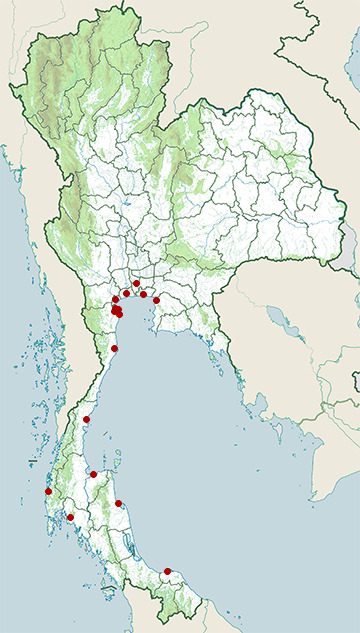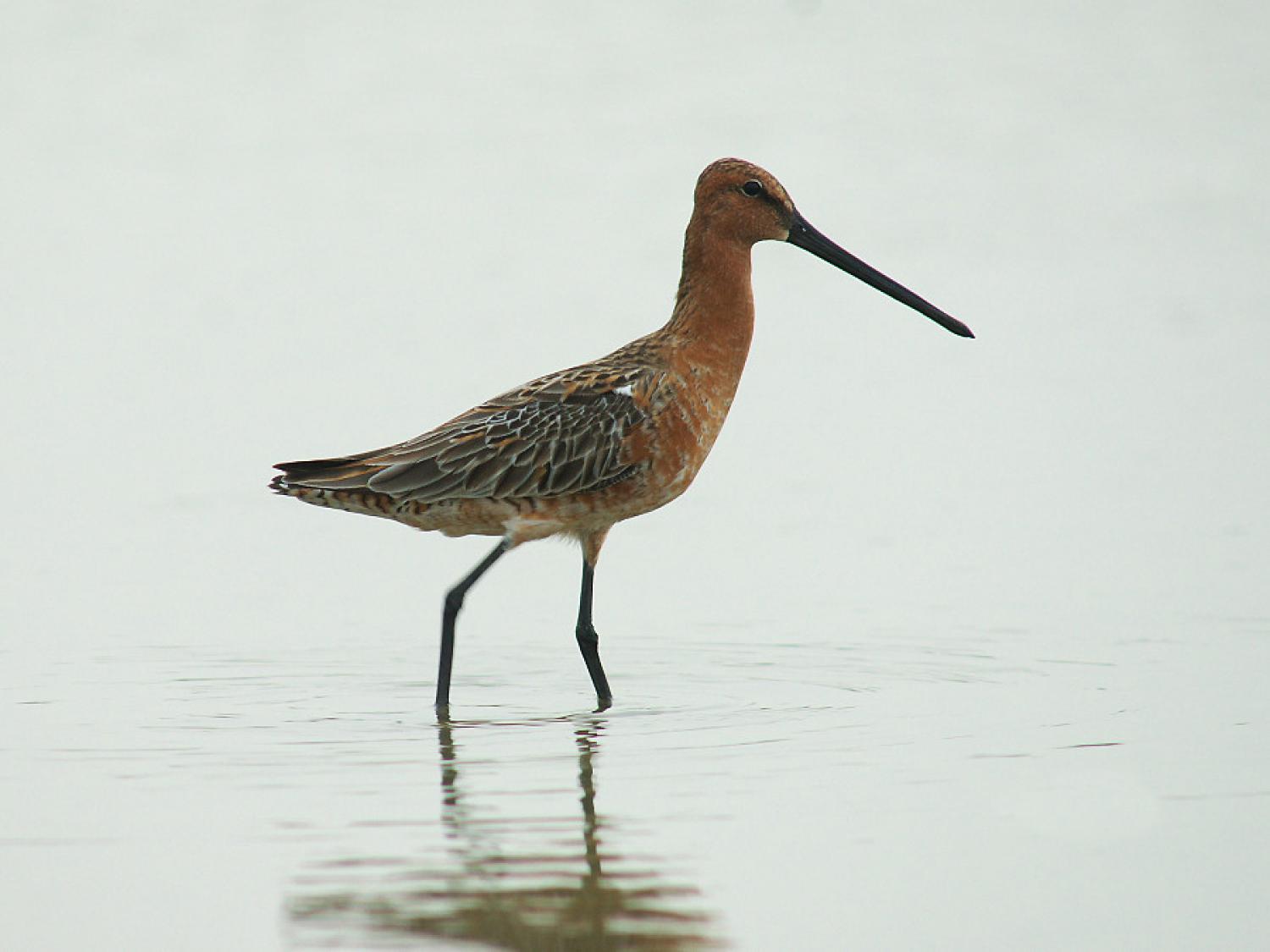Species of Thailand
Asian dowitcher
Limnodromus semipalmatus
Edward Blyth, 1848
In Thai: นกซ่อมทะเลอกแดง
The Asian dowitcher (Limnodromus semipalmatus) is a rare medium-large wader.
Description
Adults have dark legs and a long straight dark bill, somewhat shorter than that of the long-billed dowitcher. The body is brown on top and reddish underneath in breeding plumage. The tail has a black and white barred pattern. The winter plumage is largely grey.
Their breeding habitat is grassy wetlands in inland Siberia and Manchuria. They migrate to southeast Asia as far south as northern Australia, although both the breeding and wintering areas are poorly known. This bird is always found on coasts during migration and wintering.
These birds forage by probing in shallow water or on wet mud. They mainly eat insects, mollusks, crustaceans and marine worms, but also eat some plant material.
Closer species
The confusion species for this bird is not, as might be expected, one of the American dowitchers, which in any case do not overlap in range, because the Asian bird is much larger. It closely resembles a small bar-tailed godwit, although the dowitcher "sewing machine" feeding action and the yelping call are distinctions from the more widespread bird.
This article uses material from Wikipedia released under the Creative Commons Attribution-Share-Alike Licence 3.0. Eventual photos shown in this page may or may not be from Wikipedia, please see the license details for photos in photo by-lines.
Category / Seasonal Status
Wiki listed status (concerning Thai population): Rare on passage
BCST Category: Recorded in an apparently wild state within the last 50 years
BCST Seasonal status: Non-breeding visitor
Scientific classification
- Kingdom
- Animalia
- Phylum
- Chordata
- Class
- Aves
- Order
- Charadriiformes
- Family
- Scolopacidae
- Genus
- Limnodromus
- Species
- Limnodromus semipalmatus
Common names
- English:
- Asian dowitcher
- Asiatic dowitcher
- French: Limnodrome semipalmé
- Thai: นกซ่อมทะเลอกแดง
Conservation status

Near Threatened (IUCN3.1)

Near Threatened (BirdLife)

Near Threatened (ONEP)

Near Threatened (BCST)
Photos
Please help us review the bird photos if wrong ones are used. We can be reached via our contact us page.
Range Map

- Ban Laem District, Phetchaburi
- Bang Pu Recreation Centre
- Bangkok Province
- Chumphon Coast
- Khao Sam Roi Yot National Park
- Laem Pak Bia
- Mueang Chonburi District, Chonburi
- Mueang Krabi District, Krabi
- Mueang Pattani District, Pattani
- Mueang Phetchaburi District, Phetchaburi
- Mueang Samut Sakhon District, Samut Sakhon
- Mueang Samut Songkhram District, Samut Songkhram
- Nakhon Si Thammarat Coast
- Pak Thale
- Surat Thani Coast
- Takua Pa District, Phang Nga
